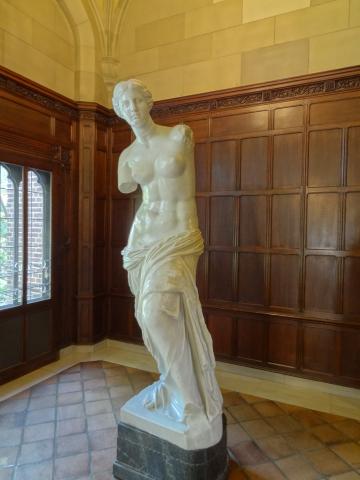By Kathy Graneggen Moberg BA ‘79
“The statue of Venus knows no age, no nationality and no locality. I thought it was cosmopolitan, belonging to all ages, all nations and localities. Venus, you know, according to the Greeks, was born of the foam of the wave, and hence was a child of nature. Her statue a finished product of nature, touched by the hand of man, is, like the hills, al-ways new, however old. You would not dare to say that she is not as young now as she was in the days of Troy. You dare not.”
—William W. Cook to York and Sawyer, June 29, 1917
MCB’s architects, York and Sawyer, would have preferred a medieval style statue to sit at the end of the grand corridor, but Cook envisioned things much differently. Since May 14, 1917, the day Venus was installed, Cookies have probably never been able to imagine anything different at the end of that iconic vista (for the record, the Gold Room’s grandfather clock sat there first). This spring we celebrate the statue’s centennial.
Cook requested a replica of the Venus de Milo in April, 1916 through Elbert Scrantom of the Hayden Company, which designed and decorated the MCB interior spaces. The order was quickly placed with the company’s Italian contact, but World War I and transatlantic communication difficulties caused delays. The first sculptor hired was conscripted, as were most of the miners who pro-cured fine Carrara marble, so the decision was made (probably in February) to purchase an already completed, life-sized reproduction. Venus embarked on an ocean voyage to New York City where, as described in a May 8, 1917 letter by Scrantom, Cook viewed it before it was shipped to Ann Arbor. Scrantom personally super-vised the installation and Venus has been a much-loved symbol of the Martha Cook Building ever since.

